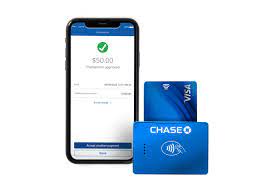Employer branding is non-negotiable in the hunt for talent. While there are numerous recruitment methods and channels available, employer branding can serve as a foundation and amplifier for sourcing or applicant experience. This post will walk you through the process of successfully recruiting staff using an employer branding strategy. We’ll also look at examples of employer branding strategy in practice.
What is Employer Branding?
Employer branding is a strategy for positioning your company as the ’employer of choice’ for both current employees (as a retention strategy) and prospective prospects (as an attraction strategy). Your employer brand is how current and prospective employees see your organization, what you value, and what it’s like to work for you.
Employer branding has a dual purpose. On the one hand, it’s an internal strategy to improve personnel retention and referral rates. On the other hand, it is an external strategy to recruit top people to your organization through marketing, fringe perks, and how your organization is presented to the outside world.
Employer branding is a marketing strategy used by human resources to develop an appealing brand for potential recruits. Employer branding communication tools and tactics recruit and keep top people in the same way that businesses establish marketing and communication activities to help them win and maintain high-quality customers.
What Is the Importance of Employer Branding?
Employer branding is more than just a marketing strategy. It is your company’s competitive advantage in a talent battle. Simply said, an emphasis on employer branding helps to highlight all of the characteristics that make your organization excel in the world of potential applications.
At the same time, it can show areas where you need to practice harder. It might assist highlight where your company is currently lacking in terms of talent attraction and retention. Employer branding may help you highlight your strengths and highlight areas where you need to improve.
In Practice, What Does Employer Branding Look Like?
Employer branding can come in a variety of shapes and sizes. However, some of the most common examples of employer branding in the workplace include:
- Having and utilizing an appealing careers page on your website.
- Share staff success stories on social media or your corporate blog.
- Using and managing employee/candidate review sites such as Glassdoor.
- Putting money into candidate experience.
- Keeping a presence at job fairs and other similar events.
Next, let’s look at how you can start implementing an employer brand strategy right now.
Employer Branding Strategy
An employer branding strategy enables you to influence and positively affect the conversation about your firm in order to increase talent acquisition and retention. Employer branding, at its most basic, is how you market your organization to job seekers and what employees say about your company as a workplace.
An effective employer branding strategy can assist you in attracting superior talent, lowering hiring costs, and decreasing employee turnover.
#1. Understand your company’s distinct value offer.
A strong employer brand starts with your company’s mission statement, values, vision, and culture. It can be beneficial to identify your company’s demands and then work backward to determine the type of talent required to achieve those goals.
Consider the mission statement of Teach for America: “One day, all children in this nation will have the opportunity to attain an excellent education.”
Teach for America can tell a compelling brand employer story on its Values page with this statement, stating, “We operate with curiosity and embrace new ideas to innovate and constantly improve. We take informed risks and learn from successes, setbacks, and each other.”
They’ve connected their beliefs and employer brand with their business goal in this way.
#2. Conduct an audit of your employer brand.
You may be unaware of your company’s reputation among job searchers or even among your own employees.
Conduct a brand assessment and internal surveys, conduct social media searches, watch career sites for reviews, or employ a reputation management service. Your study should assist you identify your employees’ favorite components of your company culture to promote, as well as any areas for development to create a great employer brand.
Glassdoor discovered that firms with above-average or leading employer brands spend more time monitoring employee engagement, acting on employee input, and monitoring brand health than brands with average or below-average employer brands.
#3. Create a value proposition for your employer.
After you’ve done your research, developed a list of corporate values, and learnt about your current impressions, you’ll want to develop an employer value proposition.
An employer value proposition is both a marketing statement and a guarantee, so mention things about your company that your employees would agree with. This value proposition can be used on your website, recruitment materials, or LinkedIn Company Page, and it can be discussed with potential applicants by recruiters and HR departments.
It is critical to highlight that your value proposition should have nothing to do with pay. Instead, you want it to inspire employees and future applicants by communicating your company’s greater mission and good impact on the globe. People want to feel that their work is significant, even if it means foregoing a higher salary.
#4. Make use of present staff.
Job searchers who want to learn more about your company’s employer brand want to hear from and see genuine employees. When it comes to your company’s working conditions, your employees are three times more believable than the CEO. As a result, your employees are some of your finest advocates when it comes to developing your employer brand.
Use their positive feelings about your company in any way you can, such as sharing reviews and testimonials on your hiring website or generating short interview films for your social media channels. 90% of organizations with leading and above-average employer brands think that their employee experience is an important component of their brand, which means that what they say can have a huge impact on perception.
#5. Develop a strong onboarding procedure.
Onboarding is a new employee’s first experience, and a poor first impression can have serious ramifications. In fact, workers who have a bad onboarding experience are twice as likely to look for another job.
Finally, establishing a great company brand image begins with an effective onboarding process. It is critical to engage and excite individuals about their responsibilities and teams from the start. By providing your new employees with the instructions and tools they need to succeed in their roles, you ensure a smooth transition, fewer attrition rates, and more productive teams.
#6. Provide opportunities for learning and development.
People quit and leave their employment for a variety of reasons, including boredom and a desire for a new challenge. Ultimately, this should be a simple repair.
Allowing employees to pursue learning opportunities and gain proficiency in new abilities demonstrates your dedication to on-the-job learning and professional growth. Furthermore, by pushing your staff, you ensure that they will not become bored in their employment, which may contribute to improved retention rates.
Furthermore, they become more valuable employees to your firm when they learn new talents. A victory, victory.
#7. Tell your company’s narrative using films, blog posts, images, and slideshows.
Use several channels while adopting a strategy to improve the market’s image of your brand. Share movies, photographs, slideshows, blogs, and other types of messaging to reach a huge number of people on platforms they currently use.
Similarly, it is vital that you employ high-quality films, photographs, and text to communicate the story of your organization. Consider including employee interviews on your job website, as well as a Slideshare made by your CEO on your About Us page.
#8. Make a concerted effort to promote diversity and inclusion.
A consistent commitment to fostering diverse and inclusive teams is a component of a good employer brand.
There are numerous advantages to this, the most important of which is that every one of your employees will feel like they belong and are safe at work. People who feel seen, recognized, and valued by their coworkers are more likely to bring their best selves to work and dedicate themselves to their daily activities. Furthermore, according to a McKinsey study, organizations that are more diverse and inclusive are more profitable.
A dedication to DI&B guarantees that your brand’s reach is extended to everyone, especially because three out of four candidates feel a diverse workforce is an important consideration when evaluating firms and job offers. Someone may be more likely to apply if they can see themselves in the people who already work at your organization.
#9. Be open, honest, and real.
Honesty, transparency, and genuineness are critical components in building an employer brand.
Don’t solicit employee feedback because you want to hear only the good things to post on your career pages. Negative feedback can also help you identify areas for growth, and implementing changes can help you satisfy the demands of more of your employees. As a result, happy employees have greater retention rates and are more willing to promote your company and brag about the culture they’re proud to be a part of.
The same is true for job searchers and members of the general public. Making misleading assertions and promises about your beliefs, culture, and events will come back to haunt you if your circumstances are too good to be true, such as when prospects accept job offers based on promises you don’t keep.
Be sincere and honest in your efforts, and commit to creating a culture that is precisely how it seems – doing otherwise can bring more harm than good.
Examples of Employer Branding
#1. Starbucks
Starbucks strives to foster a strong sense of community among its employees. For example, it refers to current employees as partners to create pride in them, and it has Instagram and Twitter accounts (@StarbucksJobs) to promote its employer brand and communicate with job searchers.
Starbucks demonstrates its dedication to being more than a product by building social media profiles to show appreciation for current employees and elicit passion in future applicants. The platforms are also used by the corporation to demonstrate its commitment to diversity and inclusion.
#2. HubSpot
The Culture Code, shown on HubSpot’s Culture Page, openly communicates every vision and value that HubSpot intends to promote and instill in workers, applicants, and customers.
More information regarding learning and development opportunities, HubSpot’s commitment to diversity and inclusion, and insight and reviews from real employees can be found further down the page. The phrasing also regularly emphasizes the job seeker: “Picture yourself at HubSpot.”
#3. Canva
Canva’s employer brand shines out due to its dedication to its objective. Its Careers page showcases its beliefs in an interactive carousel for job searchers and combines each value with key facts, emphasizing the idea that design can be a force for good.
Canva expands on this concept on its social media channels, which are complete with inspirational content and design-enhanced ideas.
#4. Eventbrite
Eventbrite established a web portal to expose job seekers to its recruitment staff in order to demonstrate its dedication to acquiring high-quality talent. The profiles are humorous and approachable, with interesting information about each recruiter.
Furthermore, according to the Eventbrite recruitment team page, “interviewing shouldn’t be nerve-wracking —– it should be exciting. It should spark great conversation. We believe in respect, transparency, and timely responses (we don’t leave anyone in the dreaded recruiting black hole).”
Its wording matches company ideals, which is likely to entice job seekers to apply.
#5. Shopify
It can be difficult to locate qualified candidates for technical employment. Many firms’ power comes from having a fantastic employer brand and strong advantages to recruit top people. Companies can learn from Shopify, which recognizes this and informs job searchers that it is now their chance to apply to you.
This acknowledgment is the first step in establishing a connection with a possible candidate, and they continue to empathize with the reader by noting that finding the proper job and fit is difficult. The rest of its careers page has all of the information needed to take a chance and apply to Shopify.
The Most Common Employer Branding Challenges
Employer branding is a sophisticated HR topic that involves many stakeholders. Let’s look at some of the most typical problems that businesses experience when developing and implementing an employer branding strategy.
#1. Scarce resources
In comparison to marketing and sales, HR departments typically do not have large budgets aside from spending on employee salaries and benefits. The fact that 53% of organizations would invest more in employer branding if they had larger budgets speaks much about the sector’s underinvestment.
#2. Employee disengagement
The lack of employee engagement in EB and recruitment marketing campaigns is one of the most significant difficulties businesses encounter when it comes to employer branding.
Employees must first be informed in order to be motivated to become advocates. According to one research, the majority of U.S. employees (80%) desire to be kept up to date on corporate news and occurrences, but as many as a quarter don’t feel they are.
Furthermore, nearly 40% of employees in the United States say they would be more willing to share firm news on social media if they were better informed. This is a squandered chance for staff to serve as brand ambassadors.
#3. Difficult ownership
Who is in charge of employer branding? Marketing, human resources, or perhaps corporate communications? We still don’t have a definitive answer to this perennial question. Employer branding can best be thought of as a discipline that sits between HR and marketing.
While human resources departments are in charge of adopting and maintaining a positive workplace culture, fundamental business values, and defining EVP and applicant personas, marketing should act as a support function in creating and disseminating employer branding content through the appropriate channels.
Furthermore, corporate communications are critical in motivating and training staff on how to be brand ambassadors.
#4. Work from home and a scattered workforce
With the rise of remote and hybrid employment, employer branding is evolving as well. Companies are already hiring individuals from all over the world since many organizations have understood the many benefits of remote work.
As a result, they must revise their employer branding strategies, study new employer branding and job advertising platforms, become acquainted with cultural variations, and completely execute remote selection and onboarding processes.
Conclusion
When it comes to hiring excellent people, 80% of talent acquisition managers agree that employer branding is critical. It can improve the quality of your hires, reduce hiring timelines and expenses, and even increase internal satisfaction among current employees (helping to retain top talent).
- BRANDING STRATEGY: Meaning, Examples, Marketing Strategies, and Consultant
- SOCIAL MEDIA BRANDING: Meaning, Examples, Strategy & Guidelines
- CORPORATE BRANDING: Definition & All You Need To Know
- EVERYTHING YOU NEED TO KNOW ABOUT EMPLOYER BRANDING
- WHAT IS SOCIAL MEDIA BRANDING: Meaning, Importance, Strategies & Guidelines






